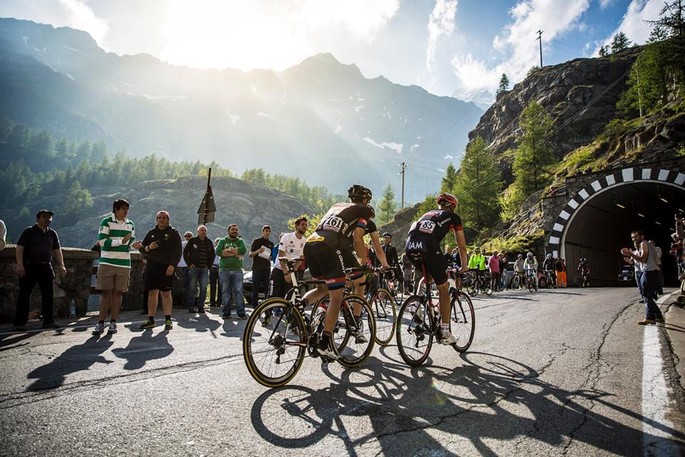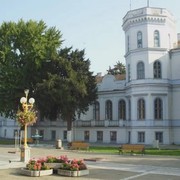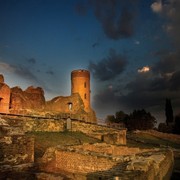Looking back to history and making history with the Giro, a Giro which is already history. This will be a special Giro, and we already knew it right after the Big Start from Jerusalem was announced. This 101st edition will be a surprising one: for the first time ever, a Grand Tour will set off outside Europe, and the finish will be in Rome. This has only happened 3 times before, in 1911, in 1950 and in 2009.
Certainly the territory of Cuneo, in love with cycling, will be a worthy setting for the event that will take place on Thursday 24th May.
Stage 18
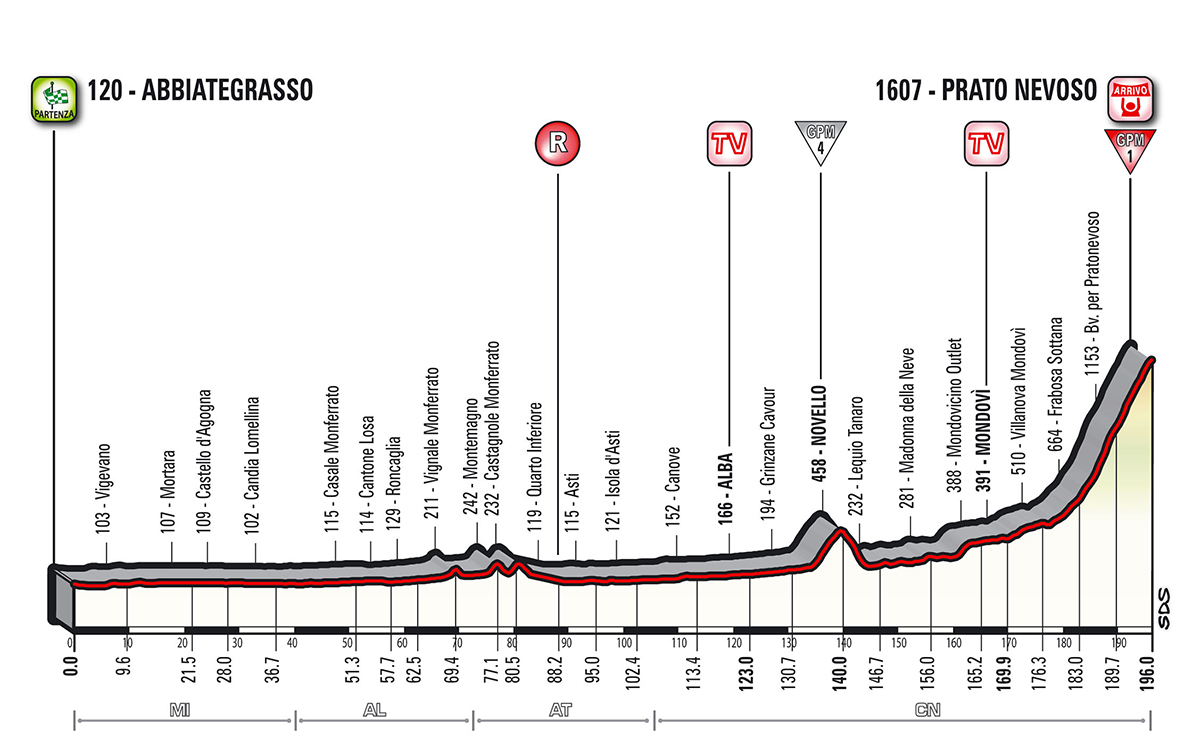
Abbiategrasso-Prato Nevoso.
Almost 200-km flat stage with a final “steep” climb. A very long approach across the Po Valley and the Langhe leads up to Mondovì, where the route starts to climb. Thus, the fight for victory will start here. A long climb with fairly uncomplicated and very constant gradient leads to the finish. It is the very climb where Tonkov (1996) and Garzelli (2000) claimed their win at the Giro and Gerrans (2008) at the Tour.
Stage 19
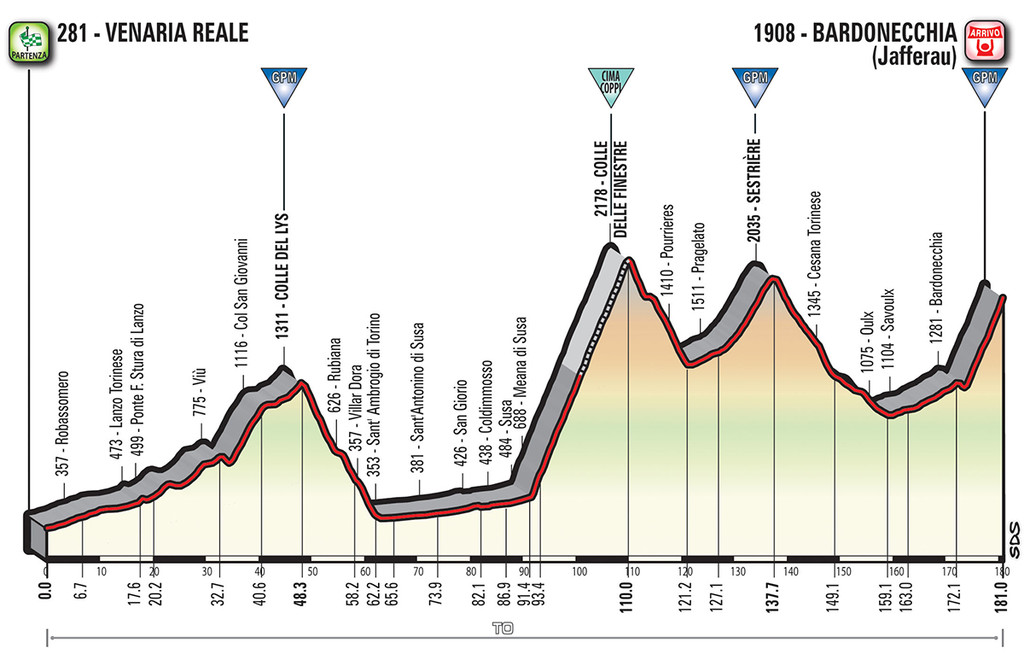
Venaria Reale-Bardonecchia.
First queen stage across the Western Alps featuring 4 categorised climbs, all of them being long and testing ascents. Past the Colle del Lys, the stage features the Colle delle Finestre (Cima Coppi) with a 9-km dirt road. This time the finish is not located in Sestrière, which is crossed by the course, but in Bardonecchia (Jafferau), after a 7-km climb at a 9% gradient. It is the same place where Eddy Merckx joined and passed Josè Manuel Fuente, who had attacked, in 1972. During the “back-up” stage in 2013 that climb was raced without any previous ascent and the finish line was crossed by Santambrogio (later disqualified) and Nibali, who won the Giro.
Stage 20
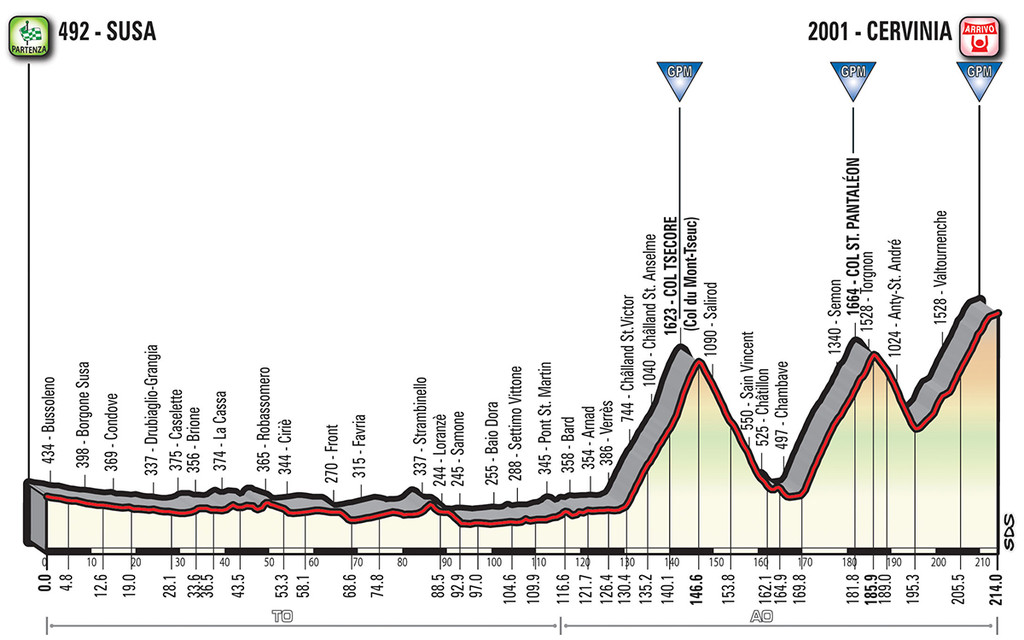
Susa-Cervinia.
Second stage in the Western Alps with 4500-m cumulative elevation gain along 3 climbs only, following a flat (though continuously uphill) section. Once in Valle d’Aosta the race takes in the new 3-km Col Tsecore climb with its last stretch at a gradient over 12% and, after a fast-running descent, the route features St. Pantaléon and Cervinia climbs with no respite. Col Tsecore has a “changing” name: from the original Col du Mont-Tseuc, in its Italian version it is called Zuccore as well as Tzecore. The Giro adopts the local signposting denomination that says “Col Tsecore”.

